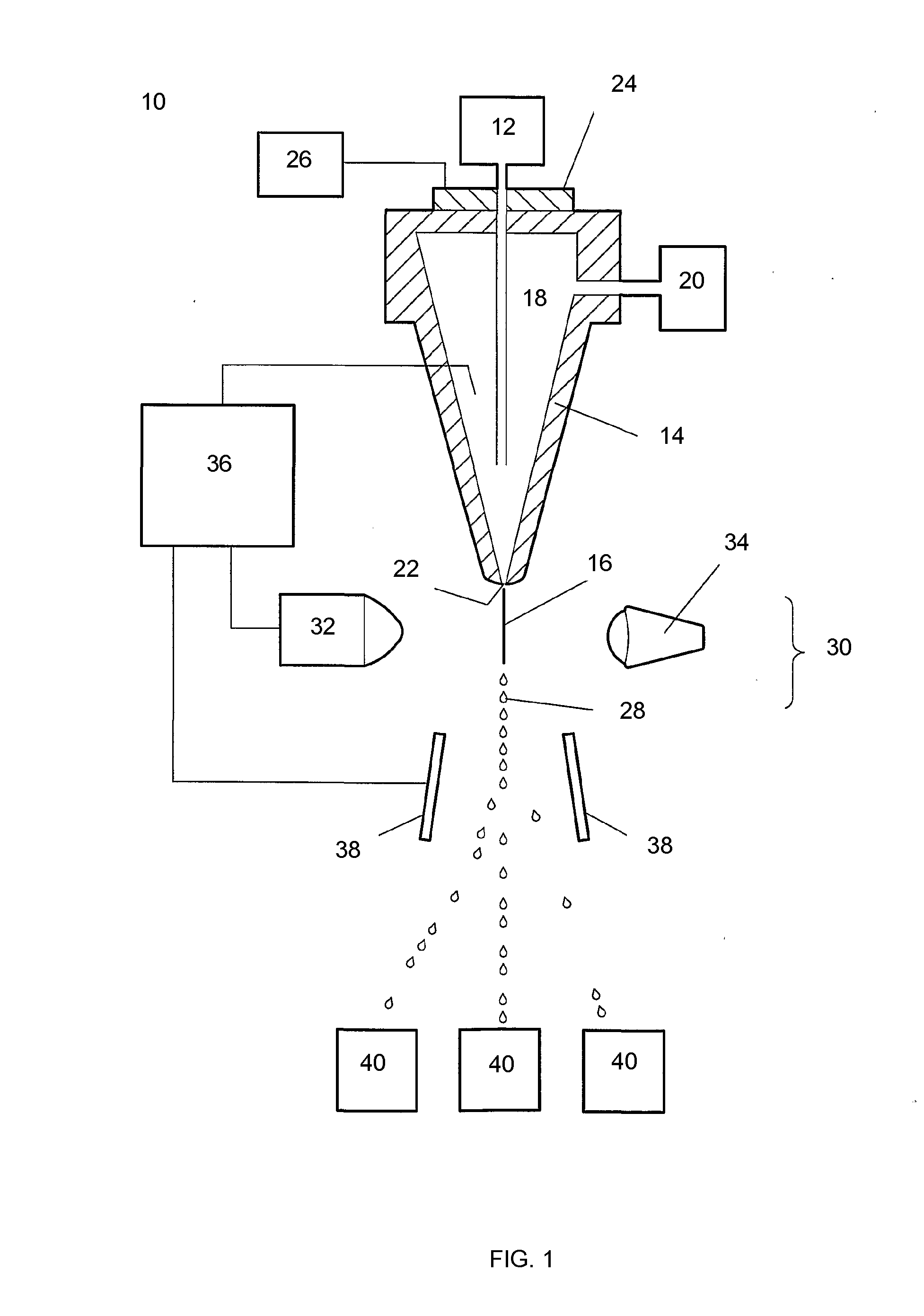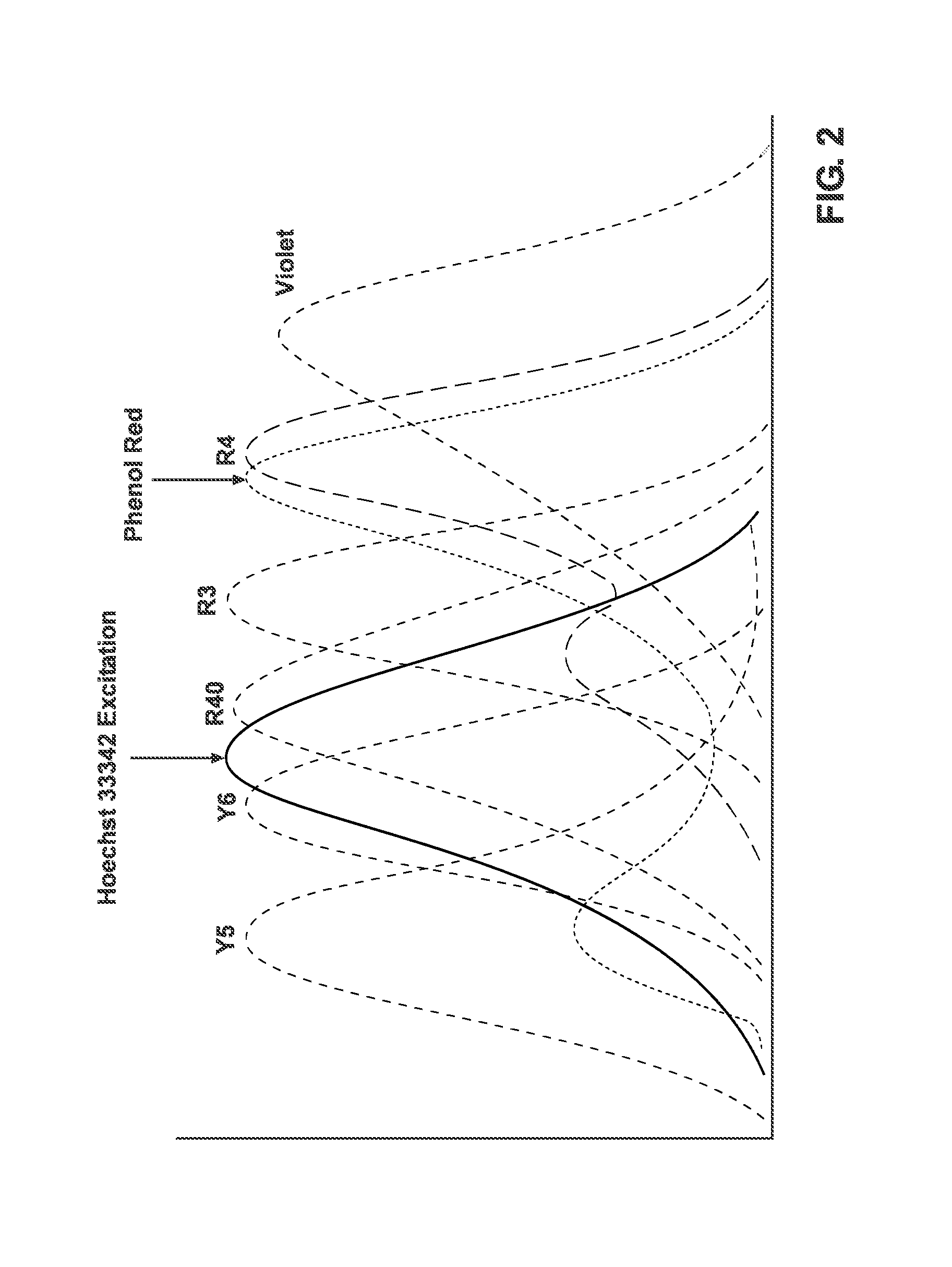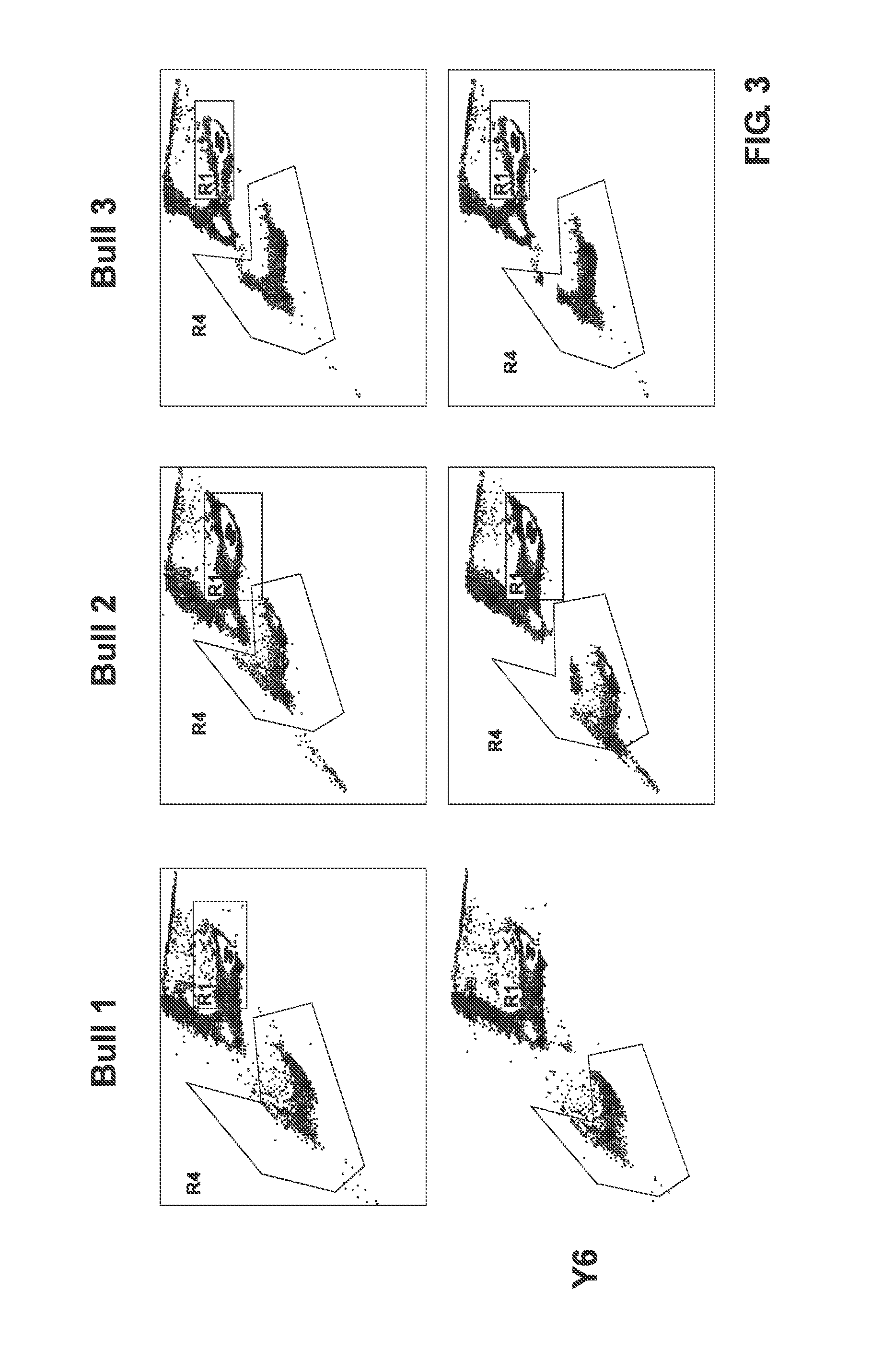Sperm staining and sorting methods
a technology of sperm and staining, applied in the field of staining and sorting methods, can solve the problems of toxic to sperm, small differences that are difficult to distinguish, and difficulty in exacerbated difficulty
- Summary
- Abstract
- Description
- Claims
- Application Information
AI Technical Summary
Benefits of technology
Problems solved by technology
Method used
Image
Examples
example 1
Comparison of Dead Quenching Dyes for Post Thaw Motility Sperm Motility in Bovine
Collection—
[0054]Sperm was collected from 10 different bulls on a routine collection schedule using an artificial vagina over the course of 4 days. The 10 bulls included both Jersey bulls and Holstein bulls. All ejaculates contained greater than 60% progressive motility and greater than 70% morphological normal sperm. Antibiotics were added within 15 minutes of collection.
[0055]Red food dye treatment 40% —A reduced volume of red food dye No. 40 control was established. Sperm was diluted to 160×106 sperm per ml in a modified TALP buffer, as described in Table 1, at a pH of 7.4. Samples collected from Jersey bulls were incubated with 16 μl of Hoechst 33342 per 2 ml of sample for between 45 and 60 minutes at 34° C., while samples collected from Holstein bulls were incubated 17 μl of Hoechst 33342 per 2 ml of sample for between 45 and 60 minutes at 34° C. After incubation an equal volume of a secon...
example 2
Comparison for Dead Quenching Dyes for Sorting Parameters in Bovine
Collection—
[0061]8 Sperm collections were taken from 7 different bulls on a routine collection schedule using an artificial vagina. The 7 bulls included both Jersey bulls and Holstein bulls. All ejaculates contained greater than 60% progressive motility and greater than 70% morphological normal sperm. Antibiotics were added within 15 minutes of collection. Portions of each collected sample received three different dead quenching dye treatments.
[0062]Red food dye No. 40 treatment 100% (control)—A control was established with a conventional volume of red food dye No. 40. Sperm was diluted to 160×106 sperm per ml in a modified TALP buffer, as described in Table 1, at a pH of 7.4. Samples collected from Jersey bulls were incubated with 16 μl of Hoechst 33342 per 2 ml of sample for 60 minutes at 34° C., while sample collected from Holstein bulls were incubated 17 μl of Hoechst 33342 per 2 ml of sample for between...
example 3
Comparison of Dead Quenching Dyes for Sperm Motility in Deer and Elk
Collection—
[0070]Each of deer and elk were collected in the Tris-egg yolk catch fluid described as a catch media in Example 1, and shipped for sorting.
[0071]A portion of each of the deer and the elk were stained by the red food dye No. 40 treatment 40% with 16 μL Hoechst 33342 and the yellow food dye No. 6 treatment with 14 μL Hoechst 33342 as described in Example 1.
Sorting and Freezing—
[0072]Samples were each bulk sorted with the same machine and parameters described in Example 1. Both sorted X and sorted Y sperm were collected into a single catch. The sorted samples were then frozen like those described in Example 1.
Results—
[0073]Frozen thawed samples were then tested for post thaw motilities and post thaw DNA fragmentation. Post thaw motilities were slightly higher in Elk sorted with a yellow quencher, while a more significant difference existed in progressive motility. In Table 10, post thaw DNA fragmen...
PUM
| Property | Measurement | Unit |
|---|---|---|
| wavelengths | aaaaa | aaaaa |
| wavelengths | aaaaa | aaaaa |
| wavelength range | aaaaa | aaaaa |
Abstract
Description
Claims
Application Information
 Login to View More
Login to View More - R&D
- Intellectual Property
- Life Sciences
- Materials
- Tech Scout
- Unparalleled Data Quality
- Higher Quality Content
- 60% Fewer Hallucinations
Browse by: Latest US Patents, China's latest patents, Technical Efficacy Thesaurus, Application Domain, Technology Topic, Popular Technical Reports.
© 2025 PatSnap. All rights reserved.Legal|Privacy policy|Modern Slavery Act Transparency Statement|Sitemap|About US| Contact US: help@patsnap.com



